Find these visible planets in April 2022: Venus blazing in the east before sunrise; Mars and Saturn, also in the east before sunrise; Jupiter, emerging in the east before sunrise in early April and easier to see as the month progresses. Mercury will return to the evening sky by mid-April, to begin its best evening apparition for the year for the Northern Hemisphere. Visible planets in depth below.
In this article:
- Night sky guide for April 2022
- April 2022: Planets in depth
- April-May 2022 heliocentric solar system
- Some resources to enjoy
Night sky guide for April 2022
Late March and early April: Jupiter emerging from dawn
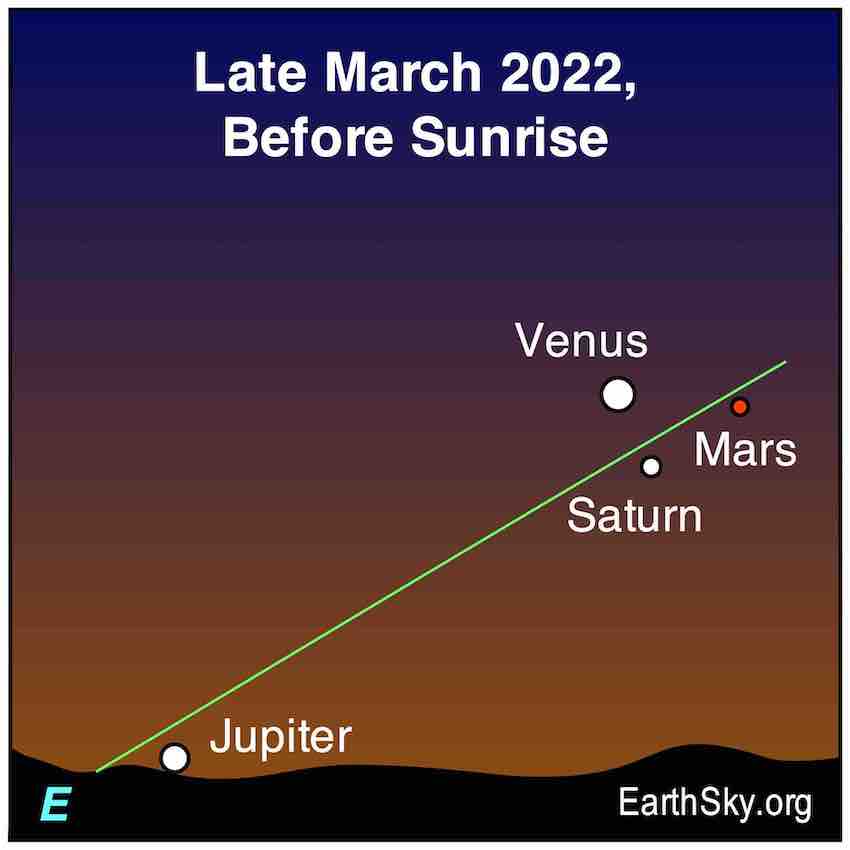
Evening of April 2: A very young moon
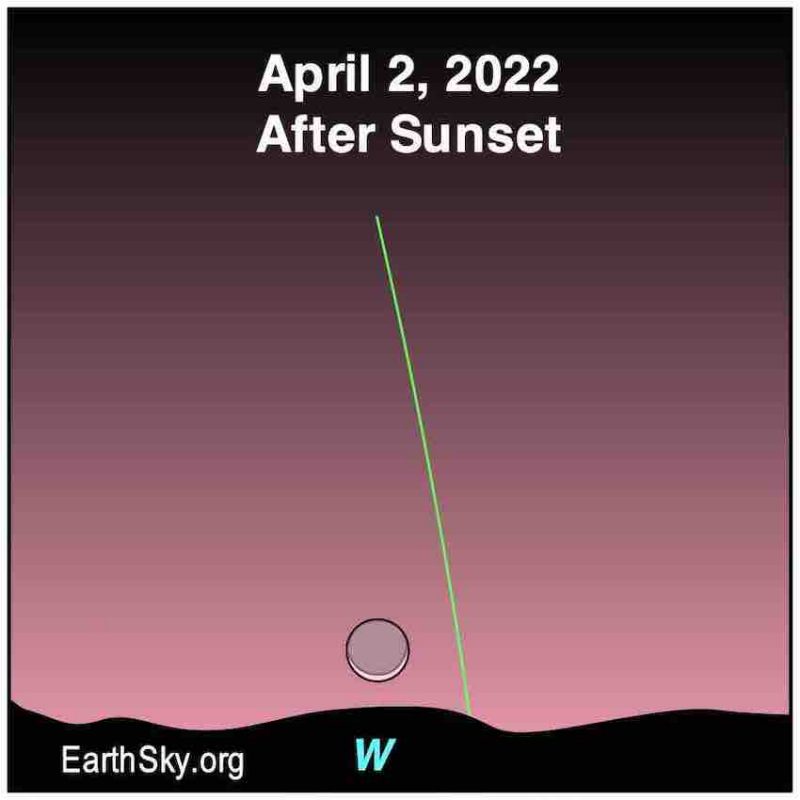
Mornings of April 4 and 5: Mars and Saturn conjunction

Evenings of April 4 and 5: Crescent moon by famous star clusters
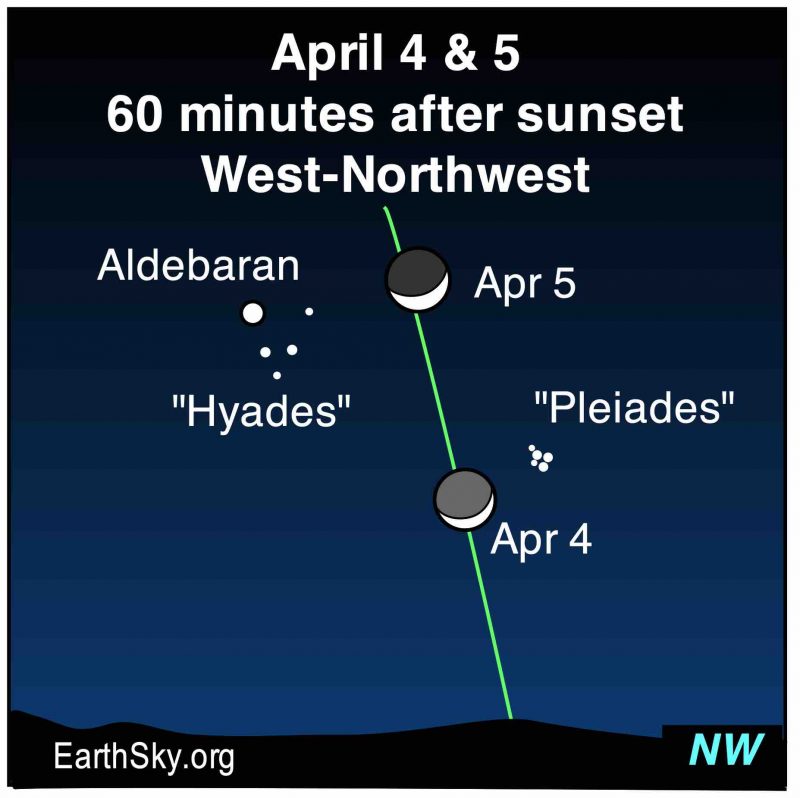
April 8 and 9 evenings: Castor and Pollux by the moon
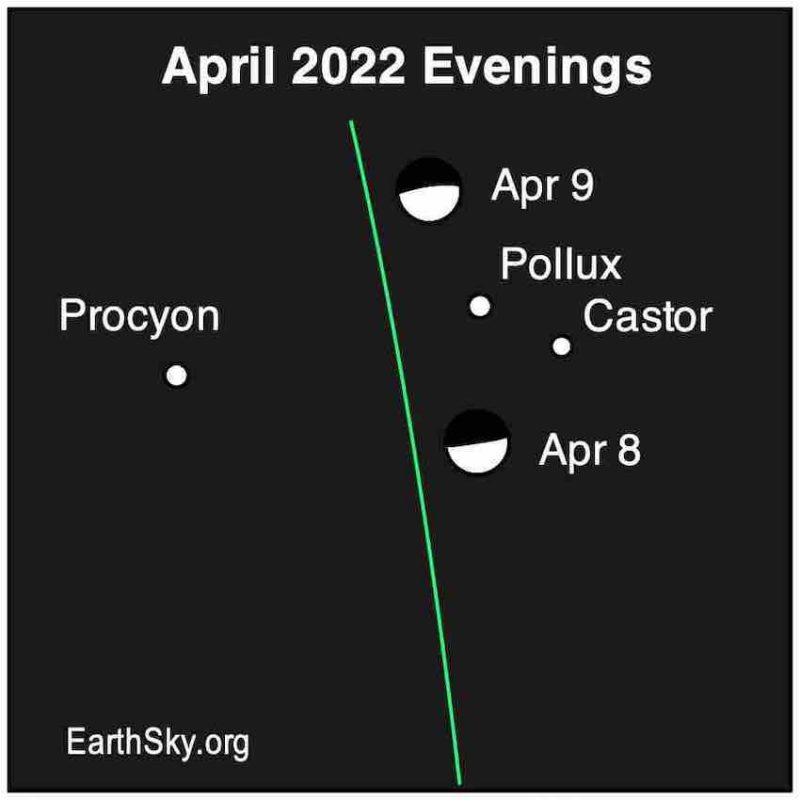
April 11 and 12 evenings: Regulus and the moon
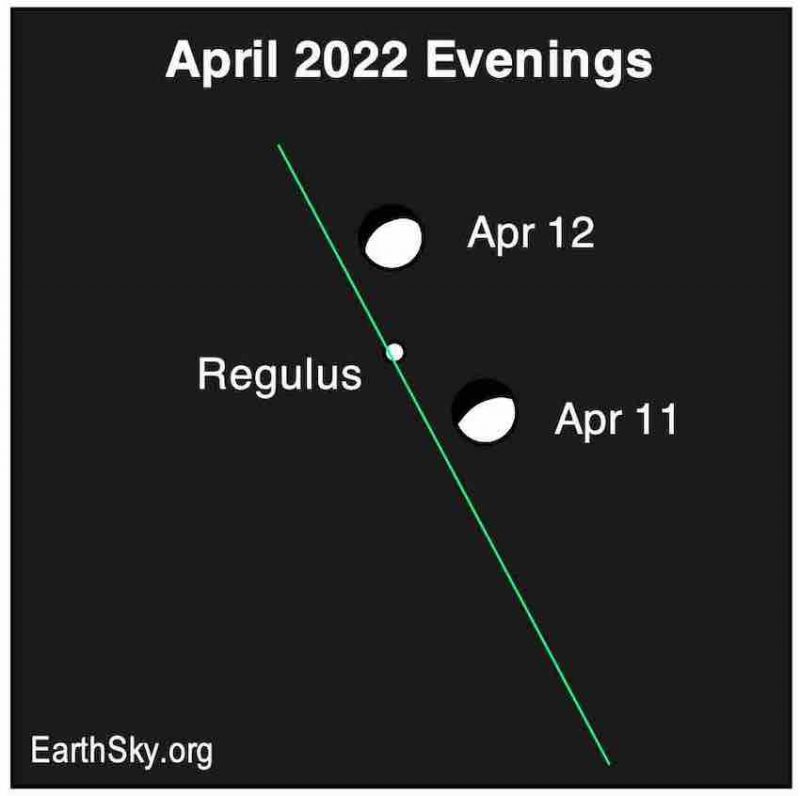
By mid-April: 4 planets from the Northern Hemisphere
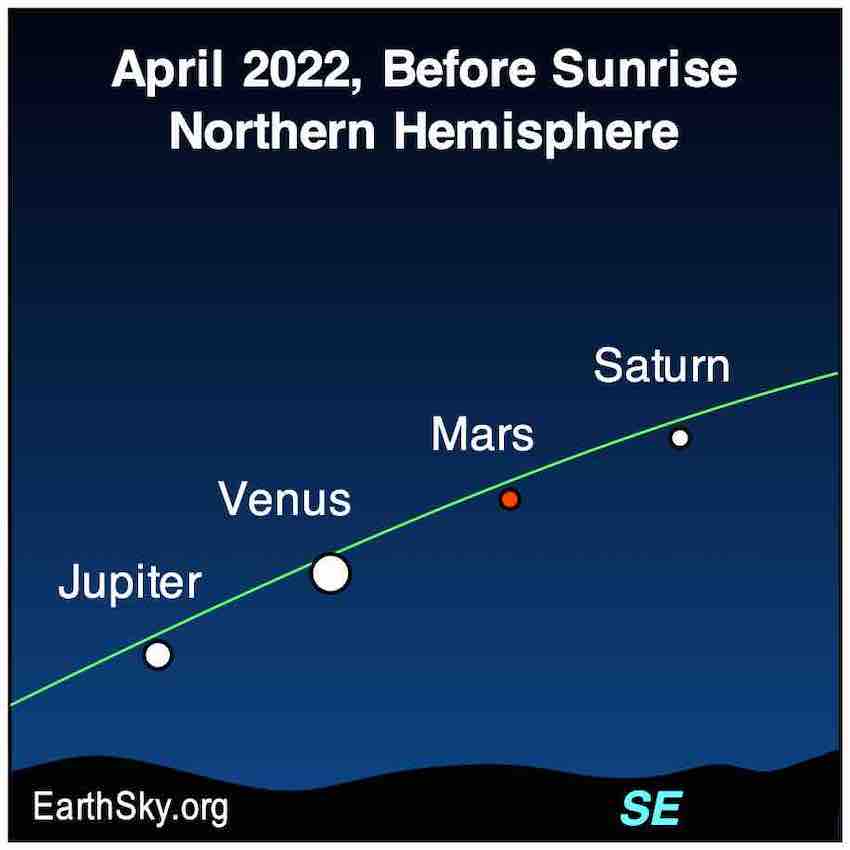
By mid-April: 4 planets from the Southern Hemisphere
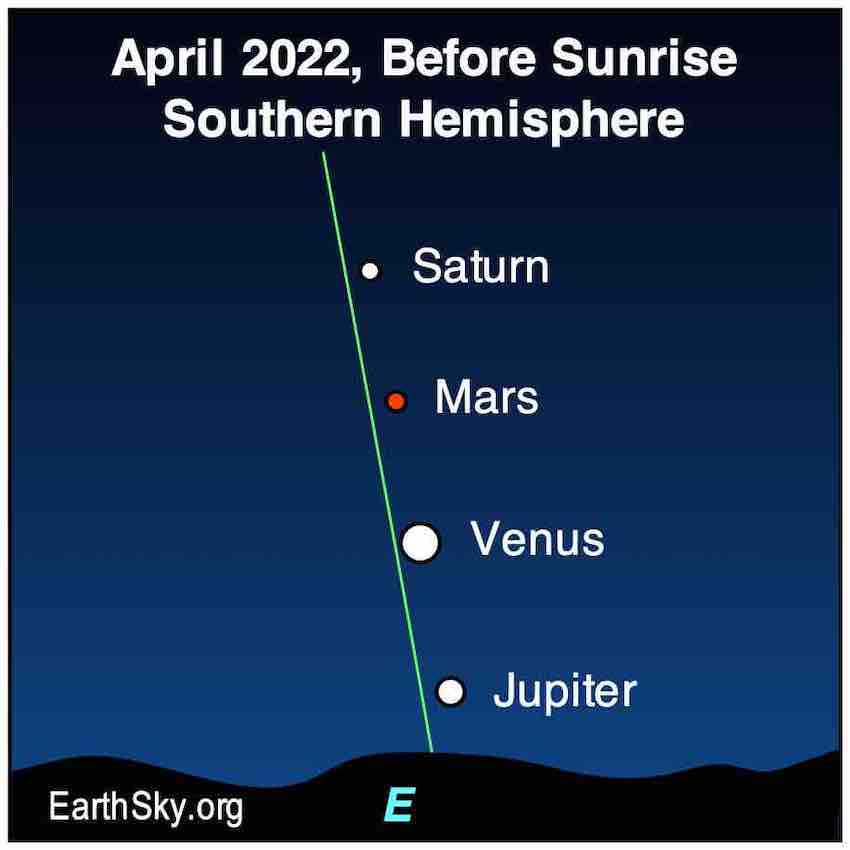
April 15 and 16 evenings: Moon and Spica
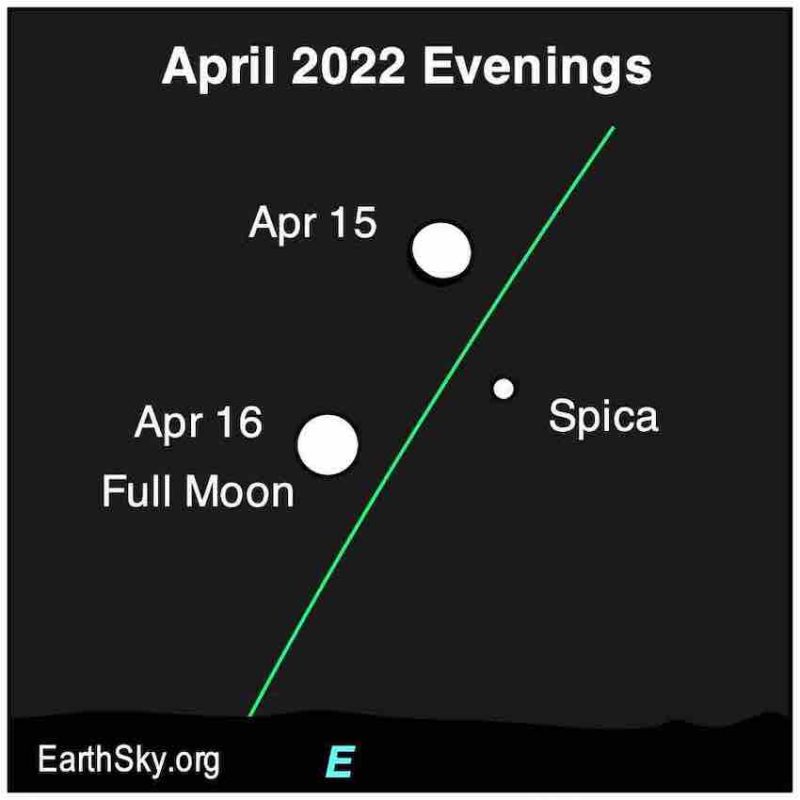
April 15 to 29, peaking on 22nd: Lyrid meteor shower
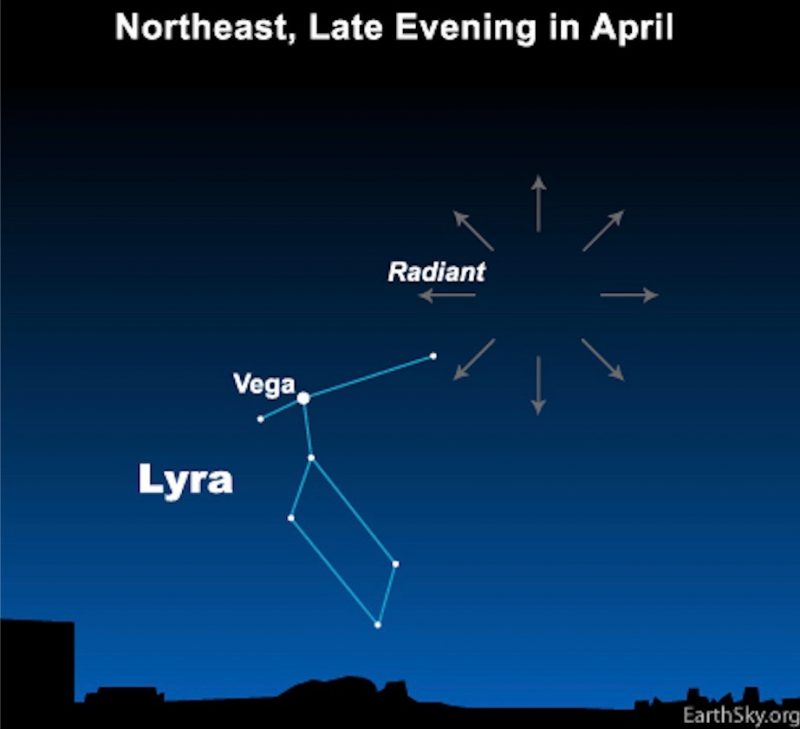
April 19 and 20 mornings: Moon and Antares
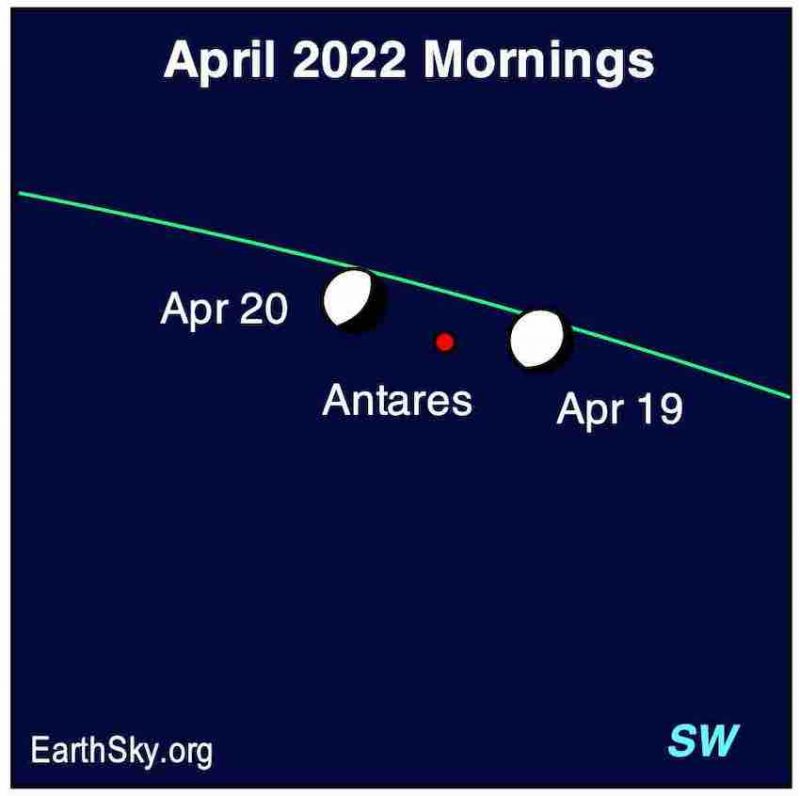
Beginning around April 20: Mercury nears the Pleiades
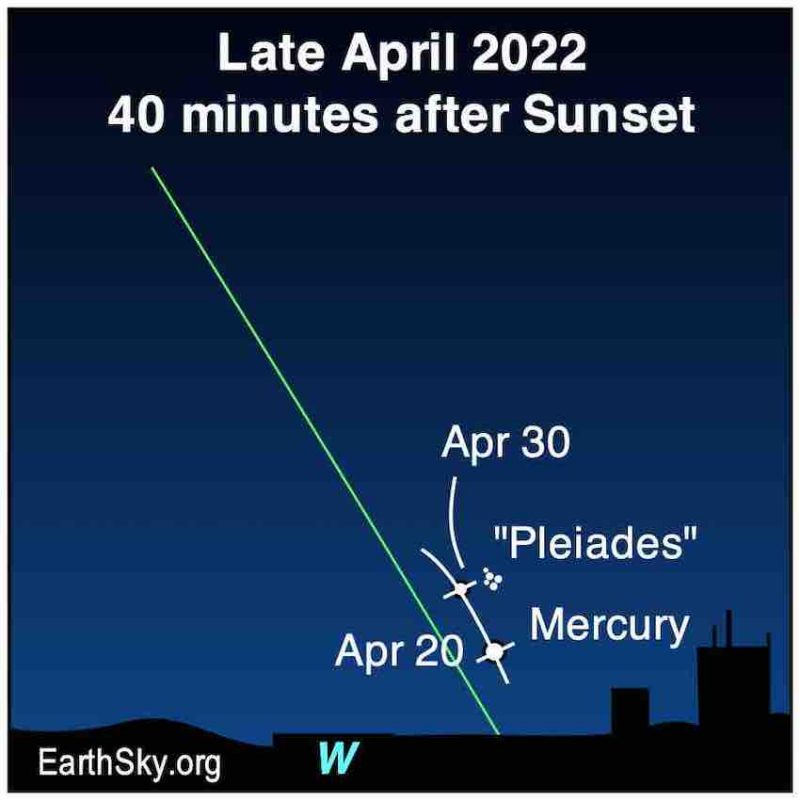
April 24 and 25 mornings: Crescent moon near Saturn and Mars

April 26 and 27 mornings: Crescent moon near 3 planets

In late April: Don’t miss the Jupiter-Venus conjunction

On April 30: A deep partial solar eclipse

On the night of May 15-16: A total eclipse of the moon
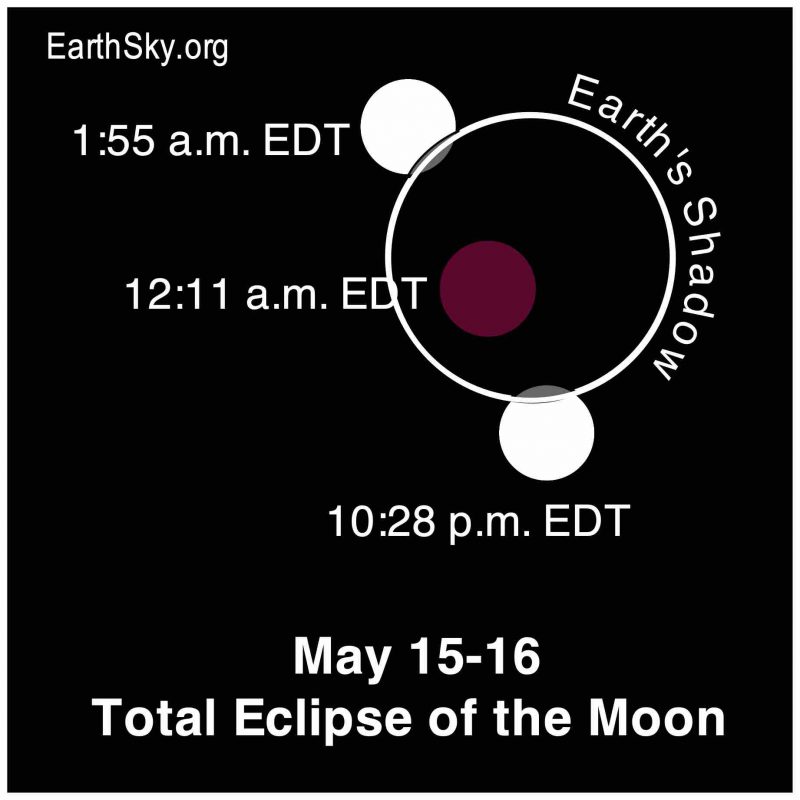
April 2022: Planets in depth!
Venus and Jupiter
Venus dominates the morning eastern sky throughout April 2022. It reached its greatest elongation – its farthest angular distance from the sunrise – last month, on March 20. Over the next seven months, Venus will slowly move a little closer to the horizon each morning. But Venus is so bright and so beautiful. You will enjoy it as the dazzling “morning star” for many months to come.
Plus Venus will have a glorious conjunction with our sky’s 2nd-brightest planet, Jupiter, before this month ends. Jupiter will be located along a regularly spaced line of planets in the eastern predawn sky. The other planets are fainter Mars and Saturn, plus very bright Venus.
And mark your calendar for the mornings around April 27 and 28, when the thin waning crescent moon will hover near Jupiter and Venus in the predawn sky.
Throughout April 2022, and whenever you might see it, Jupiter will be very bright! It’s second only to Venus among bright “starlike” objects in our night sky. So prepare to spot Jupiter on early April morning, when you’ll find it beaming out, perhaps surprisingly, from the eastern dawn glow. Then enjoy Venus and Jupiter together for the rest of this month. The Venus-Jupiter conjunction will come at 19 UTC on April 30. Then Venus will be 0.2 degrees S. of Jupiter.
Much like Saturn, Jupiter will spend 2022 shifting from the morning to the evening sky. It opposition will come on September 26.
Saturn and Mars
Saturn and Mars both are much dimmer than Venus or Jupiter. In April 2022, Saturn appears a little brighter than Mars. Watch for a fascinating sight on the morning of April 4, and extending into the morning of April 5, when Mars slides 0.3 degrees S. of Saturn on our sky’s dome. Their conjunction comes at 22 UTC on April 4. Note that Mars is the 2nd-smallest planet. Saturn is the 2nd-largest planet. Saturn shines with a golden color. And Mars appears reddish; it’s called the Red Planet for a reason. From the longitude of India – on the day of their conjunction – Mars appears to slide directly underneath Saturn, barely missing it! No matter what geographical location you view from, use binoculars to bring out the colors of these intriguing planets.
Also, keep in mind how we interpret the view in April 2022: planets in 3-dimensional space projected onto a 2-dimensional dome. Even though they seem to be close in the sky, Venus, Saturn, and Mars are actually nowhere near each other in space. Venus lies 72 million miles from Earth, and Mars is 95 million miles further out. Saturn orbits the sun just under 1 billion miles from our world!
Like Jupiter, Mars is now beginning a new cycle of visibility in our sky. Throughout 2022, it’ll brighten and shift into our evening sky, as Earth draws up behind Mars in our smaller, faster orbit around the sun. Earth and Mars will be closest on December 1. Our two worlds will be most nearly on a line in space – bringing Mars to its once-in-2-years opposition – on the night of December 7-8.
Like Jupiter and Mars, Saturn is also just beginning its cycle of visibility in Earth’s sky. It’ll come to opposition – rising at sunset, highest at midnight, setting at sunrise – on August 14.
Mercury
Mercury reaches superior conjunction – sweeping to the far side of the sun from Earth – on April 2. It will emerge into the western sky after sunset by mid-month, thereby becoming the lone evening planet. It’ll be the start of Mercury’s best evening apparition of this year, for us in the Northern Hemisphere.
Note that Mercury will be near the famous Pleiades star cluster – aka the 7 Sisters – in April 2022. You’ll probably start to notice Mercury near the Pleiades around April 20, and it’ll steadily climb closer to the cluster every night until April 29, when Mercury and the Pleiades are right next to each other. Their conjunction on our sky’s some comes at 19 UTC on April 29. Then the star cluster and the planet are separated by 1.4 degrees.
Mercury will also appear farthest from the sunset 8 UTC on April 29, 2022. This is Mercury’s greatest elongation, its greatest apparent distance from the sun on our sky’s dome. Read more about Mercury’s greatest elongation in April 2022.
April-June 2022 heliocentric solar system
The sun-centered charts below come from Guy Ottewell. You’ll find charts like these for every month of 2022 in his Astronomical Calendar. Guy Ottwell explains:
In these views from ecliptic north, arrows (thinner when south of the ecliptic plane) are the paths of the 4 inner planets. Dots along the rest of the orbits are 5 days apart (and are black for the part of its course that a planet has trodden since the beginning of the year). Semicircles show the sunlit side of the new and full moon (vastly exaggerated in size and distance). Pairs of lines point outward to the more remote planets. Phenomena such as perihelia (represented by ticks) and conjunctions (represented by lines between planets) are at dates that can be found in the Astronomical Calendar. Gray covers the half of the universe below the horizon around 10 p.m. at mid- month (as seen from the equator). The zodiacal constellations are in directions from the Earth at mid-month (not from the sun).
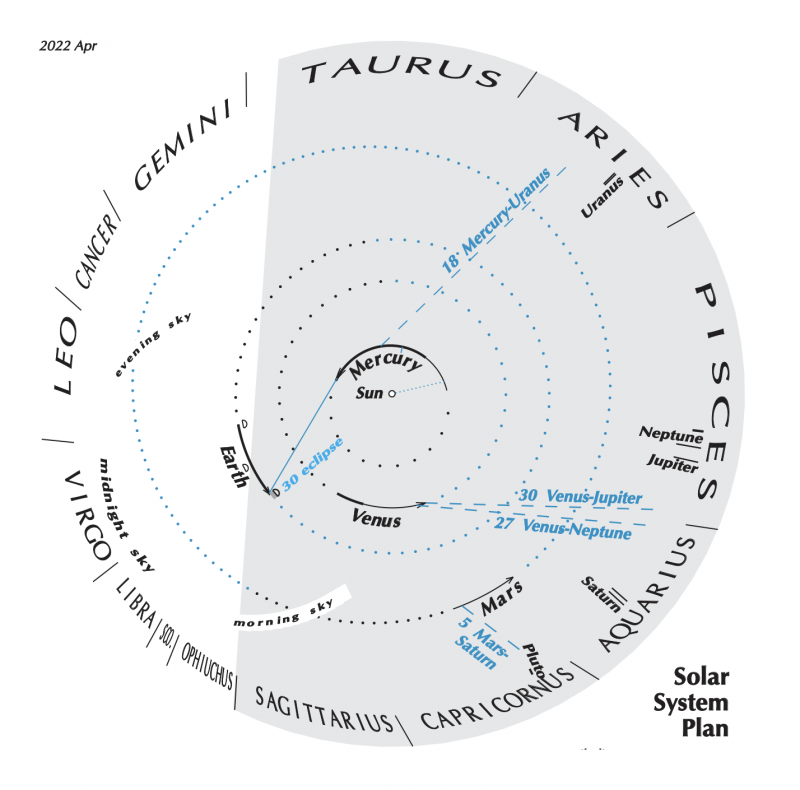

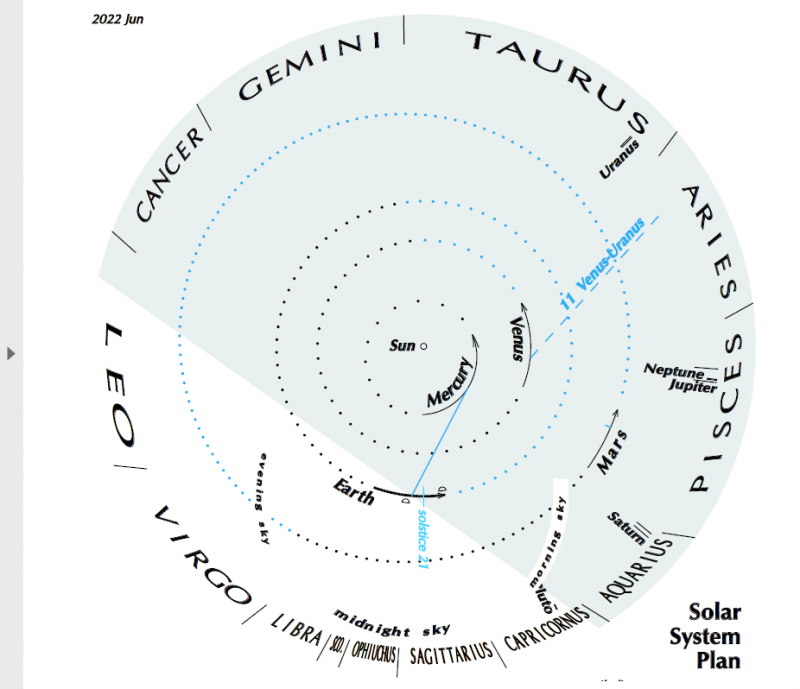
Some resources to enjoy
Don’t miss anything. Subscribe to daily emails from EarthSky. It’s free!
Visit EarthSky’s Best Places to Stargaze to find a dark-sky location near you.
Post your night sky photos at EarthSky Community Photos.
See the indispensable Observer’s Handbook, from the Royal Astronomical Society of Canada
Visit Stellarium-Web for precise views from your location
Visit TheSkyLive for precise views from your location
The Old Farmer’s Almanac provides specific planet rise and set info (U.S. and Canada)
Timeanddate.com provides specific planet rise and set info (worldwide)
Translate Universal Time (UTC) to your time
Read: Ecliptic is the sun’s path in our sky
Read: Planet-observing is easy. Top tips here
Back by popular demand! Guy Ottewell’s Astronomical Calendar for 2022
Great resource and beautiful wall chart: Guy Ottewell’s zodiac wavy chart

Bottom line: April 2022 is a month for seeing 4 planets in the morning sky. By mid-month, Jupiter and Venus – Saturn and Mars – will be stretched out in a line in the eastern predawn sky. Meanwhile, the sun’s innermost planet, Mercury, will return in mid-April to begin its best evening apparition of the year for Northern Hemisphere skywatchers. Plus Mercury will appear near the famous Pleiades star cluster, aka the 7 Sisters. April planets – April night sky – here.
Help EarthSky keep going! Donate now.
The post EarthSky’s visible planets – night sky guide – April 2022 first appeared on EarthSky.
0 Commentaires